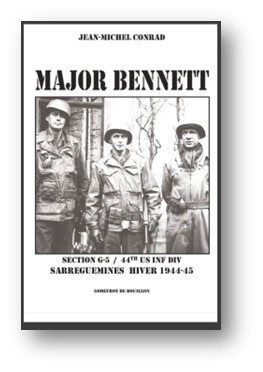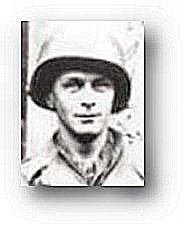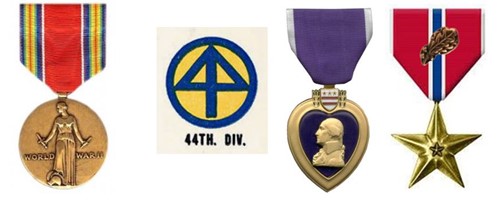Name: Bennett, Robert Henderson, Major, USA
Local address: Wilson Avenue, Matawan, NJ
Robert was born February 6, 1908 in Brockton, MA, the second of three children of Walter A. Bennett (1882-1971), a clerk in a shoe factory, and Alice B. Wright (1881-1972). He graduated from Dorchester High School in Boston and subsequently enrolled in New York University. After completion of his studies there, he studied law at Brooklyn Law School and St. Lawrence University and June of 1941 graduated cum laude with a law degree.
He married Mildred M. Kelly (1909-1999) April 21, 1934 in Brooklyn, and the couple had three children between 1940 and 1943, sons Robert, Peter and Richard. Mildred was the granddaughter of “Australian Jim” Kelly (1833-1914), a prize fighter who held the distinction of being involved in the longest bare-knuckle fight in history which occurred in Melbourne, Australia in 1856 – it lasted six hours, fifteen minutes. Kelly married a Matawan girl in 1865 and subsequently operated a tannery which was located on what is now the northeast corner of Route 34 and Main Street. Both Kelly and the tannery are featured on this website. Mildred and Robert moved to Matawan after their 1934 wedding.
He passed the New York Bar Exam in January of 1942 and was appointed Secretary of The Brooklyn Trust Company the following January, becoming the youngest officer of that firm.
Robert was an active citizen and had been President of the Brooklyn Junior Chamber of Commerce and was also a Director of its state organization. He was appointed Secretary of the Brooklyn Trust, the youngest officer ever appointed at the company. As a law student, he helped organize and found the Matawan Civic Club in 1936.
 On October 16, 1940, while working for Brooklyn Trust he registered for the draft in that borough. He was described as 5’8 ½” tall, 130 pounds with blue eyes, brown hair and had a ruddy complexion. There was a Robert H. Bennett, 22 years of age that was a member of the New York National Guard 105th Field Artillery in 1930 that may or may not have been him.
On October 16, 1940, while working for Brooklyn Trust he registered for the draft in that borough. He was described as 5’8 ½” tall, 130 pounds with blue eyes, brown hair and had a ruddy complexion. There was a Robert H. Bennett, 22 years of age that was a member of the New York National Guard 105th Field Artillery in 1930 that may or may not have been him.
He enlisted in the army in May of 1943 and was commissioned as a captain in the Specialists Reserve Service of the Officers Reserve Corps and due to his age and apparent organizational skills related to civic affairs was assigned to the School of Military Government.
When an enemy was defeated and forced to withdraw from urban areas, their military government set up to manage the day-to-day services in the community went with them. The victorious forces must then fill the void. Robert, now a member of the 44th Infantry Division’s Military Government Section G-5, was made for this assignment, and he apparently excelled in it.
 On January 29, 1945, the noted Chicago Daily News foreign correspondent Helen Kirkpatrick wrote an article entitled “Allied Military Government in French City Earns Respect,” specifically praising the efforts of Robert. He led a team of two officers and six enlisted men that managed the affairs of the town of Sarreguemines and the neighboring villages on the German border in Northeast France. He was so efficient and well-loved that a biography was written about him, Major Bennett, by author Jean-Michel Conrad.
On January 29, 1945, the noted Chicago Daily News foreign correspondent Helen Kirkpatrick wrote an article entitled “Allied Military Government in French City Earns Respect,” specifically praising the efforts of Robert. He led a team of two officers and six enlisted men that managed the affairs of the town of Sarreguemines and the neighboring villages on the German border in Northeast France. He was so efficient and well-loved that a biography was written about him, Major Bennett, by author Jean-Michel Conrad.
Robert was killed by a German sniper on April 18, 1945 – less than three weeks before Germany surrendered. He is buried with over 10,000 other soldiers in the Lorraine American Cemetery, St. Avold, France, Plot E, Row 27, Grave #44. Sarreguemines subsequently named their town square in his honor.
His wife Mildred never remarried and died in 1999. She is buried in the Saint Joseph Cemetery in Keyport.


NO COMMENTS